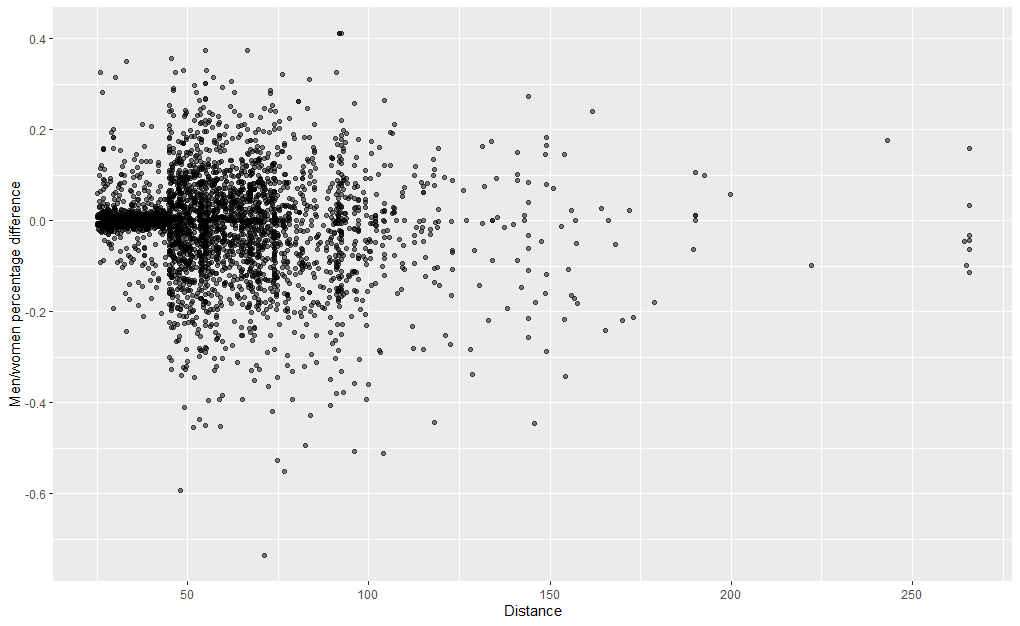I have a dataset with speed difference between men and women on several race distance. The data structure look like this.
> dput(head(dataset))
structure(list(id = c(3846L, 4333L, 4334L, 1178L, 4054L, 4540L
), km_effort = c(35.1, 28.5, 28.5, 43.5, 41.2, 41.2), diff = c(-0.00606338998621952,
-0.00988382174440651, -0.00988382174440651, -0.0475944128297982,
-0.00418224447119885, 0.00398614650722031)), row.names = c(NA,
-6L), class = c("data.table", "data.frame"), .internal.selfref = <pointer: 0x000001a8119e1ef0>)
id = the unique identifier of each men/women pair
km_effort = the distance of the race
diff = is the speed difference ((SpeedM - SpeedF) / SpeedM) * 100
It's repeated measures as I have at least 2 races per pair and the purpose it to see if there is a link between distance and speed difference.
I then start to do a mixed effect model using the lme4 package
lme1 <- lmer(diff ~ km_effort + (1|id), data = dataset), REML = FALSE)
lme1.null <- lmer(diff ~ 1 + (1|id), data = dataset , REML = FALSE)
anova(lme1.null, lme1)
> anova(lme1.null, lme1)
Data: dataset
Models:
lme1.null: diff ~ 1 + (1 | id)
lme1: diff ~ km_effort + (1 | id)
npar AIC BIC logLik deviance Chisq Df Pr(>Chisq)
lme1.null 3 -9274.7 -9255.3 4640.3 -9280.7
lme1 4 -9336.9 -9311.0 4672.4 -9344.9 64.161 1 1.147e-15 ***
---
Signif. codes: 0 ‘***’ 0.001 ‘**’ 0.01 ‘*’ 0.05 ‘.’ 0.1 ‘ ’
So for me it looks nice, as I can see that the distance seems to have an influence to the men/women speed difference.
However when I started to check the assumptions here is my fitted vs residuals plot :
I don't know at all how I can interpret this. Some one could help me to it. What can I said about normality and heteroskedascity of the residuals ?




idcreated? $\endgroup$